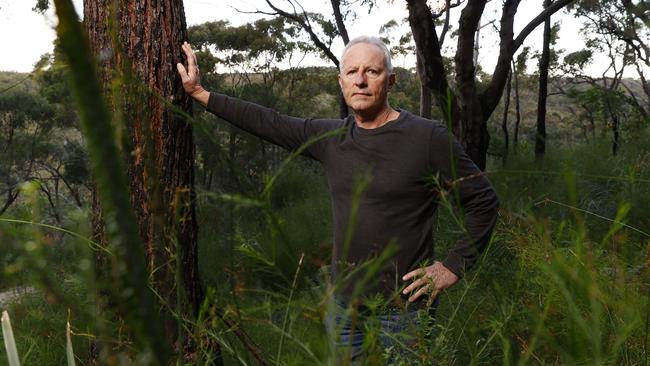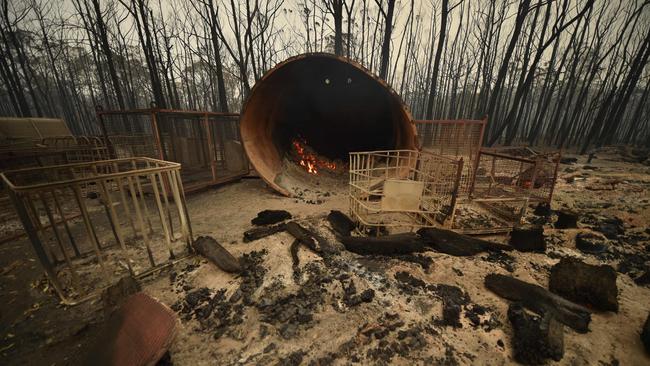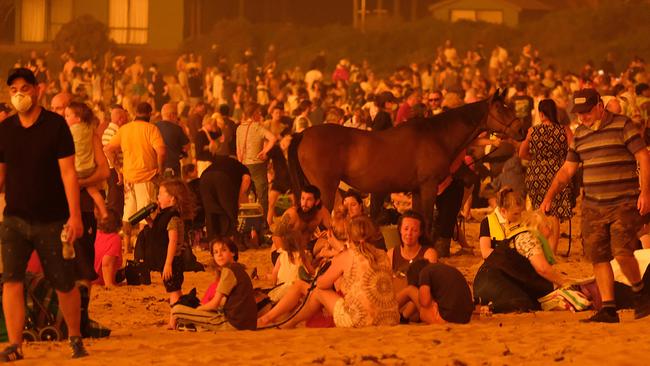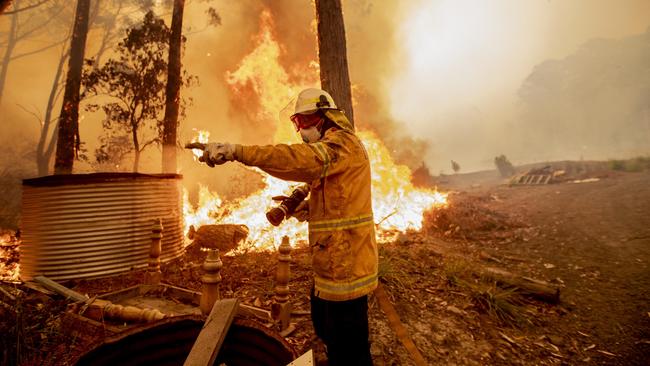NSW warned of limited firefighters ahead of potential bushfires
Speedy bush regrowth and “hopelessly under-resourced” firefighting services are the ingredients of another horror fire season, a former NSW fire chief has warned.
NSW
Don't miss out on the headlines from NSW. Followed categories will be added to My News.
Burnt bush is regrowing at twice the normal speed, a former state fire chief says, slashing the time before it is back to being a blaze risk.
Greg Mullins also warned that NSW does not have enough full-time firefighters to cope with future infernos, with numbers having grown by less than two per cent in the past 10 years.
His sharpest criticism was directed at the recently ousted Morrison government, accusing it of failing to ensure scores of recommendations from the bushfire royal commission were enacted.
Mr Mullins, who was Commissioner of Fire and Rescue NSW (FRNSW) for 14 years until 2017, said the public had become complacent about fires. “People think it’s been wet, we are fine,” he said.
But those heavy rains and warmer winters due to climate change had made burnt bush grow back at an alarming rate in the Great Dividing Range and eastern forests.

He said he had been shocked when he recently saw the speed of regrowth near Tallowa Dam in the Kangaroo Valley — an area razed in January 2020 during the Black Summer bushfires.
“It was just incredible,” said Mr Mullins, who has been involved in firefighting for 50 years.
It was a similar story in bushland at Cromer on the northern beaches, he added.
In areas that have had hazard reduction burns, “it looks like the regrowth is twice as fast as you’d normally expect,” Mr Mullins said.
There was a time when such an area would have been considered lower risk for five or even seven years.
“Now it could “probably burn intensively after three years.”

The spokesman also said the amount of hazard reduction had fallen by three-quarters this financial year compared to last, because of heavy rain.
Mr Mullins is not predicting we are months away from a repeat of 2019-20’s Black Summer. There is still too much moisture in the ground and another La Nina may yet emerge. But forest fires could return much sooner than most people expect.
He said this summer may bring massive grass fires west of the Dividing Range – akin to those of 1974-75 that burned 117-million hectares.
Such blazes had the potential to endanger communities including Dubbo, Bathurst, Orange and Cobar, he said.
“We will see big grass fires,” he said. “If you get very strong winds … there are towns where there can be impacts,” he said.
NSW did not have enough permanent firefighters to cope with future blazes, he said.
FRNSW confirmed there are only 69 more full-time fireys now than there were in 2010-11 – 3585 versus 3516.
“You need more people,” Mr Mullins said. “Fire services are hopelessly under-resourced across Australia; we are resourced for the 1990s not the 2020s.”

Mr Mullins recommended having “seasonal firefighters who are paid,” recruited from the ranks of volunteers as well as at universities.
Mr Mullins said the Morrison government had “washed their hands” of the Royal Commission into National Natural Disaster Arrangements “once they made some announcements”. Only 14 of the 80 recommendations had been enacted, he said.
Coalition emergency management spokeswoman and Nationals senator for NSW, Perin Davey, said only 15 of the recommendations were able to be enacted by the federal government on its own. Forty-two were joint responsibilities and the rest were for the states and territories.
“We were not going to ride roughshod over the states,” she said
The Telegraph can reveal that monthly royal commission implementation tracking reports by the National Recovery and Resilience Agency (NRRA) stopped a year ago.
“The federal government owns the royal commission,” Mr Mullins said. “They are the ones who have to track it and prod people and say ‘what have you done?’.”

An NRRA spokeswoman said the Department of Prime Minister & Cabinet was tracking recommendation progress, adding that the “Minister for Emergency Management may choose to publish public updates periodically, as appropriate”.
The office of new federal Emergency Management Minister Murray Watt did not respond.
Nor did the office of NSW Emergency Services and Resilience Minister Steph Cooke.
This week’s state budget increased the investment in FRNSW.
In total, the Perrottet Coalition government has spent $80 million in response to NSW Bushfire Inquiry recommendations.
Originally published as NSW warned of limited firefighters ahead of potential bushfires





